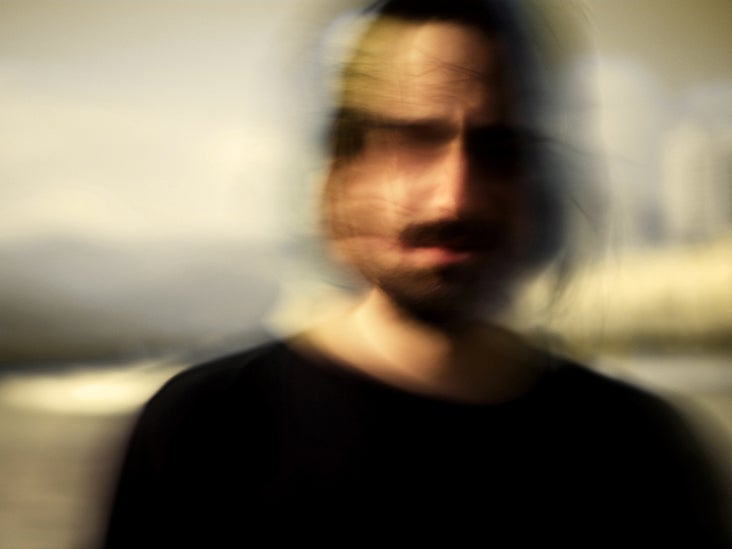Can You Have Both Schizoaffective Disorder and Bipolar Disorder? - PsychCentral.com

Schizoaffective disorder features symptoms of schizophrenia and mood disorders. It can be either depressive or bipolar type.
Bipolar disorder, schizophrenia, and schizoaffective disorder are three different mental health diagnoses. But they can share some symptoms.
No, but you can have schizoaffective disorder bipolar type.
In schizoaffective disorder, you experience symptoms of psychosis at the same time as a mood episode like mania or depression. These symptoms are preceded or followed by at least 2 weeks of hallucinations and delusions without any mood episodes.
In schizoaffective disorder bipolar type, the mood episodes you experience are mainly mania, and you may or may not experience symptoms of depression.
Bipolar disorder involves intense mood episodes that include mania, hypomania, and depression. In some cases, some people experiencing mania can also show symptoms of psychosis. There are, however, no symptoms of psychosis when you're not experiencing a mood episode.
The Diagnostic and Statistical Manual of Mental Disorders, 5th edition (DSM-5) has established the following criteria for diagnosing schizoaffective disorder bipolar type:
- Experiencing two or more of the following symptoms of schizophrenia for at least 1 month:
- hallucinations: perceiving something that others can't feel, hear, or see
- delusions: firm beliefs that don't change despite being shown evidence to the contrary
- disorganized and incoherent speech
- highly disorganized: or catatonic behavior
- reduced emotional expression: or negative symptoms
At least one of the two symptoms required for diagnosis must be from the first three items on the list.
2. Experiencing positive symptoms like delusions and hallucinations for at least 2 weeks without symptoms of depression or mania.
3. Experiencing mania for most of the duration of the illness. Symptoms of depression may or may not be present at times.
4. These symptoms can't be explained by substance use, side effects of medications, or injuries.
Schizoaffective disorder versus other conditions with symptoms of psychosis
The key difference is that schizoaffective disorder involves mood symptoms with psychosis, followed by at least 2 weeks of symptoms of psychosis with no mood episodes.
Here's a summary:
Bipolar disorder involves changes in mood and energy levels called mood episodes. These include mania, hypomania, and depression.
Symptoms of psychosis aren't a diagnostic criterion for bipolar disorder, but people with bipolar disorder with psychotic features may experience hallucinations and delusions during episodes of depression or mania.
Mania is an elevated mood that may feature irritability, excessive energy, impulsive behavior, and in some cases, symptoms of psychosis.
Schizoaffective disorder bipolar type isn't the same as bipolar disorder because, in the latter, psychosis isn't a requirement for diagnosis. Because when and if psychosis happens, it always occurs at the same time as the mood symptoms.
Schizoaffective disorder falls under the schizophrenia spectrum and psychotic disorders category. Bipolar disorder is a mood disorder.
Symptoms
The key difference is that people living with schizoaffective disorder experience symptoms of psychosis independently of mood episodes.
Meanwhile, if you have bipolar disorder, symptoms of psychosis may occur during episodes of mania or depression but not otherwise.
Causes
The cause of bipolar disorder and schizoaffective disorder isn't fully understood. Experts suspect it's a combination of genetic, biological, and environmental factors for both conditions.
Family history
Family medical history seems to be a factor for both conditions. You may be more likely to develop bipolar disorder when someone in your immediate family has lived with the condition.
In the case of schizoaffective disorder, a family history of bipolar disorder, schizoaffective disorder, or schizophrenia seems to increase your chances of the condition.
Trauma
Both schizoaffective disorder and bipolar disorder may be linked to early traumatic experiences, including abuse or neglect.
Treatments
Treatments for bipolar disorder and schizoaffective disorder may be quite similar, with a few differences.
Medication
Medications are typically used as a key aspect of treatment for these conditions.
For bipolar disorder, these drugs are used:
For schizoaffective disorder, these drugs are used:
Psychotherapy
Symptoms of bipolar disorder and schizoaffective disorder can be managed with therapeutic approaches like:
Schizoaffective disorder is a mental health condition that falls under the schizophrenia spectrum. It involves mood disorders and psychosis symptoms that can occur at different times.
Schizoaffective disorder bipolar type involves symptoms of mania and psychosis.
Although similar in some aspects, the condition is a separate diagnosis from bipolar disorder, which mainly involves fluctuating mood episodes. Sometimes, it can involve symptoms of psychosis.
It's not possible to have both conditions at the same time. You'd either receive a bipolar disorder with psychotic features diagnosis or a schizoaffective bipolar type diagnosis. The difference would be if you experience mood episodes and psychosis at the same time as in bipolar disorder or if they appear independently at times.
Comments
Post a Comment